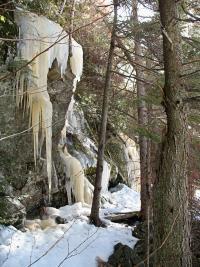|
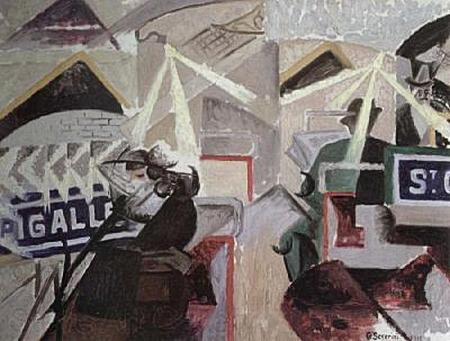
North
Gino Severini
d. February 26, 1966
_______________________
The passion that Shaviro seeks to explore here is not the oceanic feeling of interconnectedness at the heart of the Romantic sublime, but rather the Whiteheadian concrescence of “satisfaction,” summoned forth when an entity fully constitutes itself into “determinate matter of fact.”
Panpsychism’s Labyrinth Kurt Newman reviews Steven Shaviro's The Universe of Things: On Speculative Realism
(....)
To help us navigate this landscape of latency and lossiness, Shaviro engages critically with some texts from the new philosophical movements called Object-Oriented Ontology and Speculative Realism (following philosopher Paul Ennis’s lead, we can combine the various movements under the banner of “Continental Realism”). At their best, Continental Realists show that “all the entities of the world are deeply interrelated and mutually dependent even in their separation from one another, and how nonhuman agents, no less than human ones, perform actions and express needs and values.” Against modern philosophy’s claim that phenomena depend upon the mind to exist, Continental Realism affirms the reality of the object in itself. Continental Realism does not let us dismiss the experiences of our robot co-workers’ experiences as any less valid than our own. Continental Realism reminds us that we are objects for the “beach-ball of death” as much as it is an object for us, and that Pango’s withdrawal from my world is no less real than my withdrawal from hers.
(....)
... Is there a route from personalistic miracles of noumenal access to a more solidaristic re-imagining of object relations?
One model might be located in particularly moving rendition of the “uncanny mountain” from the dissident Marxist tradition. I am thinking here of the short and beautiful text that appears on the copyright page of the texts published by the radical dockworker Stan Weir’s Singlejack Books:
The term singlejack originated with the hard-rock miners of the American West. The drilling of holes for the insertion of dynamite was a tough and dangerous job. The miners worked in pairs, with one kneeling to hold erect the steel drill, which he would turn slowly as his partner drove it into the rock with blows from a sledge (or singlejack) hammer. They would switch tasks now and then, and because the job demanded as much mutual trust as skill, many lasting friendships were formed. Around the turn of the century, on-the-job organizers for the Western Federation of Miners and the Industrial Workers of the World brought additional meaning to singlejack. They used it to describe that method of organizing where dedicated advocates are developed one at a time on a highly personalized basis—as between partners.
Stan Weir’s description of the singlejack’s “uncanny mountain” overlaps substantially with Continental Realism’s “flat ontology”: the razing of bulbous reality to a single plane upon which each entity has exactly as much reality as every other entity. Weir’s world of Wobbly intimacies even takes the mountain seriously as a lively actor, attending to the specific resistances and attractions, the precarious toeholds, the smashing and blasting, the resistances and pressures of human-object interaction.
Shaviro asks: is it possible that from such sources we might plot a path towards a “democracy of objects” that is also a “democracy of fellow creatures”—a polity or rabble that encompasses the rockface as well as the miner, the Nintendo anteater as well as the philosophy professor? If these entanglements of objects already form the texture of our everyday experience, surely we should find a way to orient ourselves within them? We probably need to find a way to say yes to this question. The Universe of Things prepares us for this act of affirmation.
...(more)
via Synthetic_zero_______________________
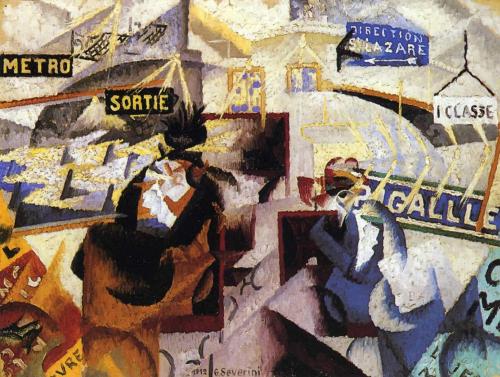
The north-south
Gino Severini
_______________________
Silent Salute of Poetry
Ryoichi Wago
Translated by Koichiro Yamauchi and Steve Redford
floor
(....)
What grave face did the station put on to greet our lives? What gentle look did it give us when it guaranteed our departures and returns? What solemn expression did it have when it saw off the beginning and met the ending of each day? The station’s name was Shinchi Station.
Running like the wind across the springtime countryside and mountain fields. Because the plants, the flowers are sprouting, budding, the thin tips of twigs are inviting the season. Feeling the breathing of storm, light, and clouds. Beethoven’s 9th Symphony is resounding. I’m a speeding conductor.
What’s a silent salute? What’s a silent salute of poetry? Whizzing over the mountain fields, over the countryside, across the bottom of the blue sky, my mind turns furiously. What’s the meaning of a silent salute? What does it mean for poetry to salute silently? The storm, the light and the clouds. A break in the clouds. A deer’s cry.
What does the bridge try to connect from this shore to that shore? What does the bridge try to convey from this shore to that shore? What does the bridge try to bring from that shore to this shore? Crossing a bridge, crossing a bridge…
Chasing the light. Chasing the wolf-shaped light. Chasing the wind-shaped light. Chasing the road-shaped light. Chasing the light shaped like you. The light shaped like the heart is dazzling. Chasing the light shaped like paddies and fields. Chasing the world-shaped light. Embracing (in my arms) the prayer-shaped light. The spring blue sky.
Nobody’s here, an attendant-less platform. A nobody’s-here, attendant-less platform. Shinchi Station, a nobody’s-here, attendant-less platform.
...(more)
_______________________

photo - mw
_______________________
The Performative Economy of the Racial Speculative
Angela Mitropoulos
S0metim3s
Abstract
This paper focuses on the conjunctures between contemporary financial speculation, national security and border control systems for what these can illustrate about changing practices of race and racism. Pivotal to these systems are procedures that emphasise potential and unspecified threats that may occur in the future alongside an understanding of uncertainty as the condition of economic value. This paper emphasises the interlocking character of racialised panic and economic value that sets about transforming the present in the guise of an imagined future.
(....)
What postracialism has in common with contemporary financial systems, national security doctrine and mandatory detention is a shared emphasis on a potential future in excess of any predictable pattern based on knowledge of the past.
What I find curious about postracialism is the extent to which it is resistant to arguments about the persistence of racial divisions or discrimination, the statistics which can easily illustrate the ongoing salience of racism, the materialities of race, and so forth. Postracialism articulates a unverifiable faith in a future unencumbered by the material constraints of the past. It is a form of idealism in the philosophical sense, disavowing its own materialities and determinations, elevating ideas as both causative and cut adrift from history at the same time. Its speculative dimension accounts I think for some of its appeal. But it also mistranslates arguments about the social construction of race into a voluntaristic claim about the insignificance of material differences, and more starkly, into a denial of the ways in which the taxonomic processes of the racial speculative—of which I think it is a part—give rise to, or materialise, race in the present, and therefore in the future.
...(more)

still waiting
for spring
photo - mw
_______________________
The Chamois
Sébastien Smirou
Translated from the French by Andrew Zawacki
(....)
2: Serendipity
With the binoculars on the crown we adjust to few
things and other imaginings of the spirit (the wrong lens
braises an image) the clearest of time in the white of what eyes
emerges from who knows whose head-focus pocus?
but it’s slow: serendipity is our only method known
and from afar the beast is washed out in a flash dissolved
inside the powdery snow one never really walks
except in his steps–but it’s for you to see.
3: A Protothought
With a hair of luck gone out of his gourd
Rupicapra rupicapra whose last name derives like
so from the first a rainstorm sometimes reverses the snow
inside the globe shaved lobe to lobe if one idea founds
the other always pushes farther the quest of the two
vanilla beans that rummage at the moment the ground
in search of the least protothought that falls
on one will pose: for posterity’s sake it’s up to you to see.
...(more)
_______________________
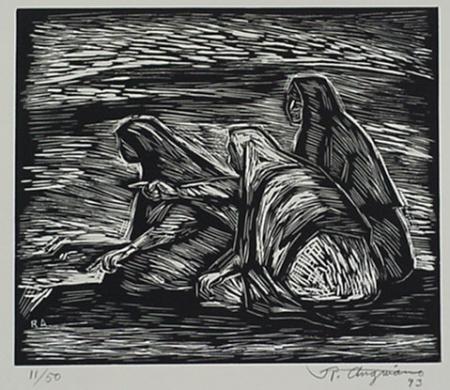
Finding Their Way
1988
Raúl Anguiano
b. February 26, 1915
_______________________
My Saga, Part 1
Travels Through North America
By Karl Ove Knausgaard
nyt magazine
(....)
In front of me lay a world so beautiful and so cruel that it numbed my senses. The vast expanse of the ice, the dark blue ocean beyond, beneath the pale blue sky, the islands in the distance, sheer cliffs rearing up from the water, and then the strip of land that could be glimpsed to the north, which had to be Labrador.
It was completely silent.
I stood there without moving for a long time, looking out to sea. The silence did something with the landscape. Usually, something is making a sound. The wind sweeping across the land, whistling past every ridge or rise it encounters. Birds squawking or chirping. And the sea, the constant soughing, night and day, that sometimes in a storm turns into roaring and hissing.
But here everything was still.
All sounds belong to the moment, they are part of the present, the world of change, while the soundless belongs to the unchanging. In silence lies age.
...(more)
_______________________

Ralph Eugene Meatyard
_______________________
The Dodo
Sébastien Smirou
translated by Andrew Zawacki
conjunctions
1: The Pepper Grains
When you can’t take nothing on the nose but a beak
whose nature we wonder may have particular aims
some purpose her sights are set on when she invents
what we don’t see all that much farther than bipeds
spying at night amid the pepper plants absorbs them more
into black grains of pepper than humble predators
of whom anyhow you hadn’t before had the feeling
the twisted idea they’d pull the wool over your eyes.
(....)
4: The Corner Bookseller
Atrophy of the propellers is just a stroke premeditated
to make small talk of pigeons to the book guy on the corner
of the eye of the familiar specter struck with his o’ertaking wings
who sank like lead like so into the paradoxical poet
we’ve known worse—our own pygmy wings clipped
our knack for flying was stymied: we flap to try
to overcome a weight we never bore penguins
we flail at a sky that lay dead like a load on my weary eye.
...(more)
Between the Museum and the Zoo: Sébastien Smirou
Andrew Zawacki
_______________________

A Windmill, Snow Effect
Félix Ziem
b. February 26, 1821,
_______________________
Copyright and the Tragedy of the Common
Tracy Reilly
Abstract
In his 1968 article, The Tragedy of the Commons, biologist Garret Hardin first described his theory on the ecological unsustainability of collective human behavior, claiming that commonly held real property interests would not ultimately be supportable due to the competing individual interests of all who use the property. In the legal field, Hardin’s article is frequently cited to support various theories related to real property and environmental law issues such as ownership, redistribution of wealth, pollution, over population, and global warming. Most scholars claim that a tragedy of the commons does not exist in intellectual property-related goods due to the fact that such goods are non-rivalrous, i.e., they have the ability to be simultaneously enjoyed by unlimited agents without diminishment. In this article, however, I will describe my related tragedy of the “common” theory in the context of copyright law doctrine, in which I will illustrate a broader moral and philosophical tragedy related to the manner in which contemporary copyright scholars are discouraging and outright debasing traditional creative works of authorship while inspiring an alternate doctrinal approach which they define by using subtle and elusive terms such as “collective ownership” and “collaborative cultural production.” In this article, which examines copyright theory in a unique historical, literary, and philosophical context and contributes to the often contentious contemporary debate on the nature of creativity, I will show that viewing the process of copyright authorship and ownership of its resultant works with a collectivist or collaborative lens—or with what Søren Kierkegaard labels a “crowd mentality”—instead of continuing to reward individual authors for their creative works will invariably lead to the demoralization of the spirit of man and a culture in which common and regurgitated works will be produced rather than works of genius and individual originality, thus resulting in a decline of progress in contravention with Article I of the U.S. Constitution.
The Tragedy of the Commons
Garrett Hardin

Oswald Grill
1878 - 1964
_______________________
Cerae: An Australasian Journal of Medieval and Early Modern Studies
Vol 1 (2014)
Emotions In History
The Melancholy Of Henry More
David Thorley
Abstract
This article treats Henry More’s philosophical approach to melancholy and his personal experience of the disease. Koen Vermeir argues that, in approaching the imagination philosophically, More was performing a 'balancing act' between addressing the subject as a medium between soul and body, and regarding it as a non-corporeal vehicle of reason and the spirit. 'In his life', Vermeir adds, 'More was also performing a balancing act': both an opponent of and subject to enthusiasm. In this article, I give closer scrutiny to that balancing act, charting the points of distinction and overlap between More’s philosophy of and encounters with melancholy. In the search for relief for his symptoms, I argue, More deployed two significant (and related) techniques: practicing philosophy and engaging in epistolary correspondence.
via the BookForum's Omnivore
_______________________
Taking Care of Digital Dementia
Marcel O'Gorman
ctheory
There is no conclusive empirical evidence that the Internet and other media technologies undermine cognitive skills such as memory and attention. And yet, arguments based on anecdotal evidence and technological determinism continue to persuade readers, many of whom, such as best-selling author Nicholas Carr, have a vague sense that they are not thinking like they used to think, and that technology is to blame. From the surveys of mysterious market research group Embrain to Carr's Pulitzer Prize nominated book The Shallows to Bernard Stiegler's anxieties about tertiary memory in the Technics and Time trilogy, there is a growing body of literature about digital media and cognitive disorders. One of the most recent manifestations of what might be called speculative cognitive science is the coining of the term "digital dementia." Like other types of dementia, a diagnosis of this new disease is based primarily on anecdotal evidence in the form of self-reporting. While for some, this questionable cognitive condition may be cause for skepticism and dismissal, I would argue that, at the very least, this new disease should be embraced as a thought experiment, one that requires a practice of care and attention in the face of a situation that might best be approached speculatively.
(....)
We might want to take care of digital dementia then, not as a form of cognitive impairment--after all, cognition must be considered within specific historical and cultural contexts, and what's more we cannot predict how the brain will adapt to the increasing cognitive demands emerging from new media--but as a potential political impairment, one that occurs when we lose control over the psychic, biological, and technical aspects of specific cognitive tasks. Digital dementia may not be a disease, but the symptoms it identifies may well be the result of a war on cognition that is being waged by some of the most powerful corporations in history. ... The concept of digital dementia, brought to life by news media and propagated as an Internet meme, may well be science fiction, but this toxic concept might be used to generate a more careful discussion about the politics of cognition in an age of rampant hypomnesis. At the very least, such a discussion might inspire, for example, scholars to forego reading from a page at conferences, and turn instead to active dialogue, or perhaps to experimental performances that adopt digital media as a first-aid kit in confronting the issue of cognition and technology.
...(more)
_______________________
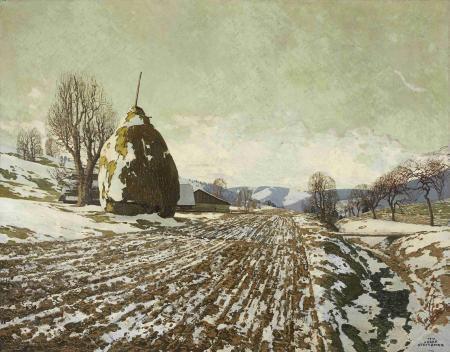
Josef Stoitzner
_______________________
Riddle
Justin Quinn
So what do you say to a five-year-old
who’s realised that everything will die?
You fight it, but no matter how you try
you still repeat the lies that you were told.
It was last year in summer, the fields were gold,
etc. Had there been cotton, it would’ve been high.
His frame is retching with the question why.
But soon the old words work and he’s consoled.
And as the clever lies dispelled his fit,
arrived here with great speed, now at his back,
a towering black wave was about to hit.
I held his eye and the wave froze in the air.
He wandered off to play. The watery stack
remained for anyone who had a care.
More poems by Justin Quinn1 2 3 4
_______________________
Virno and History
McKenzie Wark on Paolo Virno's Déjà Vu and the End of History
Public Seminar Commons
(....)
The formal anachronism allows one to glimpse the virtual in the actual, the reserves of language and labor as pure form: “language is never realized by the sum of words spoken… labor-power cannot be equated to the sum of completed labors…” Thus, the end of history is not the result of an excess of memory, but rather by its obfuscation. It is not a Nietzschian active forgetting that is called for, other than in the sense of putting aside the details of particular pasts to grasp the generative world of the past in general. If anything, the formal anachronism is an active remembering of the virtual. Hence “Learning to experience the memory of the present means to attain the possibility of a fully historical existence.”
Of Nietzsche’s three kinds of historical thought: the critical and monumental might idolize or moralize the past, but these are not real dangers. The antiquarian mode is what is damaging, as it reduces the past to an inventory of things to be preserved and venerated. As such it is usually the actual present smuggled back into the past, a form of disabling nostalgia.
Virno also diagnoses a complimentary historical pathology, what he calls modernariat. This is a doubling of the present in an illusory always-been. It is characterized by a mania to collect the specific residues of a past that seems to confirm this present. It is quite different to Walter Benjamin’s collector, who brings lost and marginal pasts back to life. Modernariat insists that those now victorious were always so.
As such, it is the characteristic aesthetic mode of the spectacle. ......(more)
_______________________

Oswald Grill
_______________________
To Collapse Or Not To Collapse
pushing for economic ruin or building a great transition
vimeo
At one end of the spectrum, some environmentalists are fueled by a strong belief that speeding up an implosion of the global financial system is the only thing that can prevent catastrophic climate change – they emphasise a need to focus all efforts on building our resilience to survive in low resource-dependent and localised economies. Counter to this position are others who remain firmly dedicated to building a mass global movement to achieve a full-scale emergency, wartime-like transition of our economy – they anticipate the restoration of safe climate conditions by rapidly eliminating greenhouse gas pollution and actively cooling the planet through conversion of the current system. It seems that urgent times create radical responses – we have run out of time for half measures – what will it take to rescue the climate?
-
Sustainable Living Festival
via Synthetic_zero
_______________________

Josef Stoitzner
1884-1951
_______________________
Seminar
Justin Quinn
I carry America into these young heads,
at least some parts that haven’t yet got there—
Hawthorne’s Salem, Ellison’s blacks and reds,
Bishop’s lovely lines of late summer air.
The students take quick notes. They pause or dive
for dictionaries and laptops, or turn to ask
a friend as new words constantly arrive.
The more they do, the more complex the task.
They smoothly move from serious to blasé
and back again. I love the way they sit
and use their bodies to nuance what they say.
I lean forward to catch the drift of it.
When it’s ended, they’ll switch back to Czech,
put on their coats and bags, shift wood and chrome,
and ready themselves for their daily trek
across a continent and ocean home.
Justin Quinn - A Prague-based poet, professor and translator
Justin Quinn interviewed by Sarah Borufka
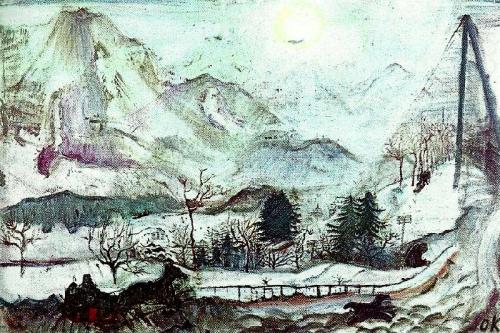
dents du midi
Oskar Kokoschka
1909
_______________________
Crossing Over:
Temporalities of Erasure and Recuperation in the Contemporary Long Poem, For Example, in Erín Moure’s The Unmemntioable and M. NourbeSe Philip’s Zong!
Margaret Christakos
lemon hound
(....)
The movement of rhythm is survival. Beckett’s The Unnamable (1953), best known by those last lines “I must go on. I can’t go on. I’ll go on,” is an incantation whose use of phrasal repetition injects momentum into the telling of an immobilizing existential crisis, nicely echoing Gertrude Stein’s affective frame of “repetition as insistence.” The throb of language speaking the I to an I who listens tells a dialogic story of the body infused with its experience of itself staged by language, still. For those of us who are alive, and everyone visible in this or any room, silence is described with language, and the absence of language is hewn of language, and silence is only possible because of language.
That’s fine for the living; but what about the dead, little trout; is their language in our body?
There I am far again, there I am absentee again: it’s his turn now, he who neither speaks nor listens, who has neither body nor soul. It’s something else he has: he must have something, he must be somewhere. He is made of silence (there’s a pretty analysis), he’s in the silence. He’s the one to be sought, the one to be, the one to be spoken of, the one to speak. But he can’t speak: then I could stop, I’d be he, I’d be the silence, I’d be back in the silence, we’d be reunited, his story the story to be told.
But he has no story, he hasn’t been in story? It’s not certain: he’s in his own story, unimaginable, unspeakable. That doesn’t matter: the attempt must be made, in the old stories incomprehensibly mine, to find his. It must be there somewhere. It must have been mine, before being his. I’ll recognize it, in the end I’ll recognize it: the story of the silence that he never left, that I should never have left, that I may never find again, that I may find again. Then it will be he, it will be I, it will be the place: the silence, the end, the beginning, the beginning again – how can I say it? That’s all words, they’re all I have – and not many of them: the words fail, the voice fails. So be it. I know that well. It will be the silence, full of murmurs, distant cries. The usual silence, spent listening, spent waiting, waiting for the voice.
from Samuel Beckett, The Unnamable
Rhythm moves up and out of a text, any piece of writing, in the particular pleats and flounces of its language of conveyance, as Lisa Robertson so often discusses, and today we have congregated in a context of enactment of writing, hearing, reading and speaking in English. We knew Fri Feb 7 in the afternoon, we knew colloquium, we arranged all of our comings and goings to allow for this being in a room, at a time, a reading of papers, a listening of voices, but perhaps most of all among us, we expected a consensus of English.
...(more)
_______________________
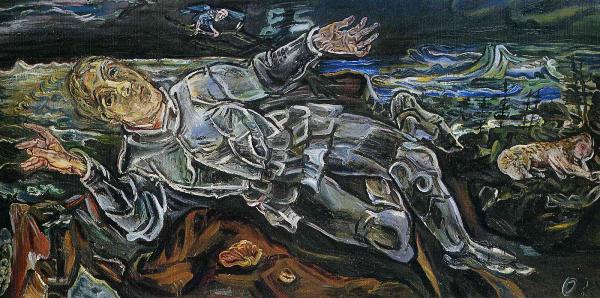
Knight Errant
(Self-Portrait)
1915
Oskar Kokoschka
d. February 22, 1980
_______________________
The “miraculous constellations” of photomontage mischievously redeploy the “real materials” of everyday life. At some of the most important scenes in twentieth century art history, the counter-map — like Byron the Bulb in Thomas Pynchon’s Gravity’s Rainbow — loiters in the background plotting a revolution.
Avant-Garde, I: Dada conquers!
Dee Morris & Stephen Voyce
Visual forms of knowledge production and representation — examples of the practice Johanna Drucker calls graphesis — appear in the work of almost every important twentieth-century avant-garde movement. Many of the most compelling compositions of Italian Futurism, Dada, Surrealism, Fluxus, Situationist and Concrete poetics, and Pop and Conceptual Art throw maps and counter-maps into their multimedia mix.
In his “Zurich Chronicle,” penned in February 1916, Tristan Tzara reports magnificent goings on at the Cabaret Voltaire. Performances by Hugo Ball, Mme Hennings, and Tzara entertain the crowd, behind the audience paintings by Pablo Picasso and Hans Arp adorn the walls, along with F. T. Marinetti’s “geographic futurist map-poems.” Tzara likely has in mind the Italian Futurist’s “Examples of Words in Freedom” (e.g., “After the Marne”), which, although not maps per se, were nonetheless spatial compositions. In Marinetti’s “typographic revolution” and the painting of Picasso and Arp, page and canvas alike are multi-sensorial zones of dynamic force.
German Dadaists were among the earliest artists to make sustained use of maps as artistic material. Hannah Hoch, Raoul Hausmann, and Kurt Schwitters all experimented with cartographic inserts, and maps feature prominently in four of the best known early examples of photomontage: Hoch’s Cut with the Kitchen Knife (1920) and Hausmann’s Dada Siegt!/Dada Conquers! (1920), Tatlin lebt zu Hause/Tatlin at Home (1920), and ABCD (1923-24).
...(more)
_______________________

Eric Gill
b. February 22, 1882
_______________________
Excommunication
Three Inquiries In Media And Mediation
Alexander R. Galloway, Eugene Thacker, and Mckenzie Wark
(....)
Have we not forgotten the most basic questions? Distracted by the tumult of concern around what media do or how media are built, have we not lost the central question: what is mediation? In other words, has the question of “what” been displaced by a concern with “how”? Have the theoretical inquiries been eclipsed by the practical ones? Is it sufficient that media be understood as simply bi-directional relationships between determining apparatuses? Is it sufficient to say that a medium is always a tool for influence at a distance?
This book directly targets such assessments of media. We target the Achilles heel of media theory, the one aspect of mediation that is so hard to accept, the insufficiency of mediation. Horror author Thomas Ligotti puts it thus: “In a world without a destination, we cannot even break ground on our Tower of Babel, and no amount of rush and hurry on our part will change that.” For there exist modes of mediation that refuse bi-directionality, that obviate determinacy, and that dissolve devices entirely
Does everything that exists, exist to be presented and represented, to be mediated and remediated, to be communicated and translated? Of course, we know that the fact that one can communicate doesn’t necessarily mean that there is something to say, but at the same time one cannot help notice in our media cultures the seduction of empty messages, flittng here and there like so many angelic constellations in the aether. Do we not always assume that communication is possible and even desirable—or better, do not our attitudes toward communication always presume the possibility of communication, that “there will have always been communication,” even before a single word has been uttered? A common language, a common ground, an agreed-upon topic and rules of engagement . . . so much has already taken place prior to the first words being uttered or the first message being sent.
(....)
via Monoskop Log
_______________________
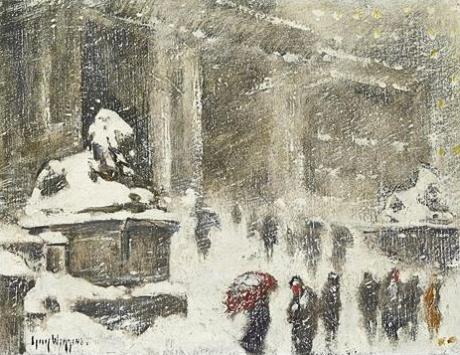
The library
1931
Guy C. Wiggins
b. February 23, 1883
_______________________
Homeless in Aesthetics
Virgilio A. Rivas
Kafka's Ruminations
Reading Merleau-Ponty ‘Cezanne’s Doubt,’ one gets an impression that doubt is essential to creating a work of art, and not just a work of art in which, incidentally, and we may have to wander a bit, it may be relevant to infuse something known in physics—that any work is an outcome of how a body undergoes a certain form of displacement. ... For the aesthetic part of the ‘work’ we are tracing here in relation to art whose mere presence is always an evidence of something already displaced to begin with, we may take Merleau-Ponty’s description of this region as that very ‘facticity of the unreflected,” or in Husserl, that ‘vague morphological essence’ (described by Deleuze and Guattari in A Thousand Plateaus). Or, just as I wish to inflect my own voice, here in this caesura between physics and art, I may have to describe this space, rather ingenuously, as an outlying area of thought where one can perceive, outside the mediating technique of logic, a certain form of poetic conceit, a kind of ab/presencing (the play of absence and presence) if not of the immediate evidence of ‘without light,’ ‘without illumination,’ without the usual comforts of what we may call a ‘home’.
Such home is a place where philosophy settles itself comfortably—in reflective thought. Thought is understood here to be a well-lit space, like a set piece whose assumed totality is underlined by light, color, or the texture of that invisible feeling of being magnified by the aura of the visible, which is now at risk of becoming invisible in light of our present climate crisis—the visibility of the green (understood to be the dominant light property of Nature) threatened by the overcast of the grey (or the revenge of the inhuman, the climate, by any means, which can reduce the visible to the utter chaos of unbecoming, including the subject’s gaze which anytime can be returned to its inhuman origin, to its one true grey ecology). In the case of Cezanne’s technique or non-technique set against the standard of linear perspective, it comes with the task “to modify all the other colors in the picture so that they take away from the green background its characteristics of a real color.”
...(more)
via —synthetic_zero_______________________
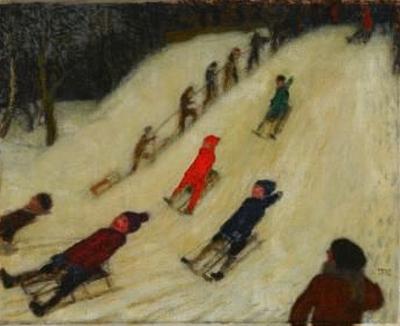 Rodelnde Kinder
1908
Franz Von Stuck
b. February 23, 1863

The Dorking Road, Coldharbour, in Snow
1916
Lucien Pissarro
b. February 20, 1863
_______________________
The Noise Machine
Ian Smith
Uncivilized Animals
(....)
More often than not noise is a by-product and, worse yet, may signal an inefficiency in the system. On the surface, this seems to provide a motivation within the framework of civilization to turn down the volume. But the silence of civilization is something altogether different.
A quieter subway system is not a tenable solution. Gordon Hempton’s goal of re-routing commercial jets so they don’t fly over national parks is admirable but woefully insufficient. Ear plugs, noise damping materials, new technologies, and new legislation will not be sufficient to quiet the noise machine of civilization or to create a meaningful silence.
The only silence that can be achieved within the framework of civilization is a false or perhaps toxic silence; indicative of a loss rather than a presence; a deprivation rather than an opportunity. It is the silence in the title of Rachel Carson’s Silent Spring. It is the silence of social control, domination, and death. It is silence achieved with a muzzle. It is sensory deprivation and isolation.
...(more)
via Forgottenness
_______________________
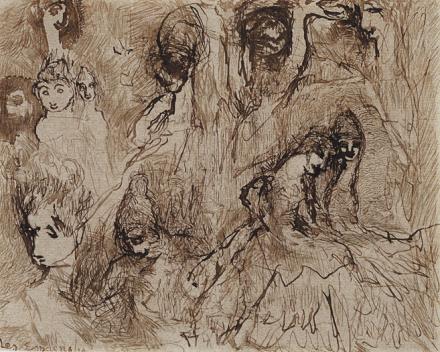
Louis Soutter
d. February 20, 1942
_______________________
Hearing the Tone of the Self:
Toward An Alternative Ethics of Translation
V. Joshua Adams
(....)
Translation is an art of divided loyalties; a translator is responsible at once to her source but also to her readership. Competing conventions of punctuation bring these divided loyalties to the fore, since they are one of the many ways in which a text in one language can differ from a text in another one (not to mention a way in which modern texts can differ from older texts in the same language, and in which prose and poetry in the same language can differ from each another.) Of course punctuation is hardly the most conspicuous difference between texts in different languages; the most conspicuous difference is that of the languages themselves!5 These differences produce obstacles to mutual understanding that a translator must try to overcome. Overcoming them is not easy. Eugene Nida explains that “[s]ince no two languages are identical … it stands to reason that there can be no absolute correspondence between languages. Hence there can be no fully exact translations.”
(....)
... “Foreignizing translation in English can be a form of resistance against ethnocentrism and racism, cultural narcissism and imperialism, in the interests of democratic geopolitical relations.”
Even if one does not agree with the philosophy of language that undergirds Venuti’s critique (and I do not), there is ample historical evidence of the overt and covert ethnocentric violence of domesticating translation for his moral critique of it to stand. (I leave it to others to explain how a commitment to a Derridean conception of meaning as endlessly deferred should not also endlessly defer things like moral judgments against violence, and in favor of, say, “democratic geopolitical relations.”) The history of the translation of poetry is certainly guilty of the charges lodged against domesticating translation practices more generally. In fact, despite recent “poetry of witness,” there seems to be a strong historical connection between poetic vocation and the eradication of otherness. What Allen Grossman called the “eidetic violence” of representation manifests itself in translations that seek to be poems in their own right. So let us say we grant, then, that the history of translation has been driven by chauvinistic ideologies and by aesthetic, rather than ethical, crtieria. Is a foreignizing translation the only, or indeed the preferable, response? Might there be moral, and not just aesthetic, reasons to justify a “domesticating” translation (and thus moral, and not just aesthetic reasons, for resisting a foreignizing one)? Is fidelity worthless in the translation of poetry? Venuti’s definition of translation as “forcible replacement” delegitimizes translation under all auspices except those of power and resistance to power. Offering an alternative approach to the ethics of translation would allow us to revalue (or merely value) translations and translation practices that could otherwise look suspect in the current intellectual landscape. More ambitiously: it might give us a way to translate poets, or poetic projects, that do not seem well served by existing translations, whether foreignizing or domesticating.
...(more)
B-Side Modernism
nonsite #15
via the page
_______________________

The Watchers
1984
Julian Trevelyan
b. February 20, 1910
_______________________
Lyotard and the philosopher child
Karin Fry
Abstract
Jean-François Lyotard’s description of the philosopher uses a metaphor comparing the philosopher to the child. This article traces the use of the child metaphor in relation to philosophy throughout Lyotard’s work. In general, the historical problem with philosophy for Lyotard is that it has been understood as involving maturity, mastery, and adulthood. While the stereotype of the wise philosopher might suggest a mature expert who knows all, Lyotard rejects this view. For Lyotard, the philosopher is the child who seeks answers, but cannot master them. The wisdom of the philosopher is similar to Socrates’ wisdom, in that he is wise because he knows the limitations of his knowledge and does not presume to be a master. Furthermore, the philosopher is the one who listens for what has not yet been articulated and says something new. Philosophical language does not merely report or observe, but it creates expressions of what is new by becoming attuned to something latent in the world. Therefore, the answers will not be mastered, comprehensive, or settled for good. In Lyotard’s later work, the mode or method of philosophy is closer to reflective judgment because the issues it examines are open to further discussion. Lyotard’s linking of philosophy with childhood helps avoid an understanding of philosophy grounded in technological rationality in which practical mastery is the goal. Understanding the world exclusively through the categories of means leading to ends, assumes definitive answers, mastery, and expertise. Though many understandings of philosophy stress the practical knowledge conclusively obtained or strive for mastery, Lyotard sees these forces as enemies to philosophical thought, which requires more openness to childhood. Consequently, philosophy is fully political by providing a small voice against the loud and overwhelming push toward practicality, efficiency, and the discourse of capitalism.
...(more)
childhood & philosophy
Vol 10, No 20 (2014)
_______________________
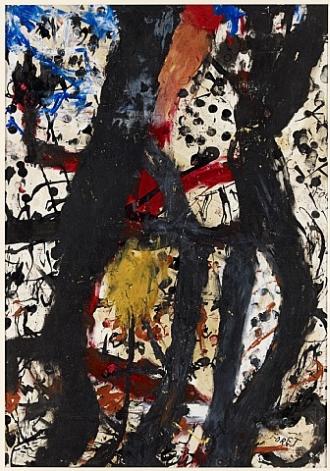
Forêt
Louis Soutter
1942
_______________________
Dogging Darwin:
America's Revolt Against the Teaching of Evolution
J. Herbie DiFonzo, Ruth C. Stern
Abstract
More than four in ten Americans believe that God created humans in their present form 10,000 years ago. American antagonism toward the teaching of evolution is deeply rooted in fundamentalist tradition and an aversion to intellectualism. These forces have combined to demonize Charles Darwin to such an extent that sectarian-based legal and political attacks on evolution show no signs of abating. Darwin’s day in court began in 1925 with the famous Scopes Monkey Trial. It continued into the 21st century with Kitzmiller v. Dover Area Schools. Throughout, the core creationist agenda has remained the same, although an evolution in labeling has produced such variants as “creation science,” “intelligent design,” “teach the controversy,” and, more recently, “sudden emergence theory.”
Along the way, anti-evolutionists invoked the First Amendment’s Free Exercise Clause to argue that religious freedom trumps the church-state divide. They also claimed, pursuant to the Establishment Clause, that maintaining a secular state imposes a decree of non-belief on Christian citizenry. Bracketed by the events in Dayton, Tennessee and Dover, Pennsylvania, this article explores the anti-evolutionist crusade and concludes that creationist interpretations of the First Amendment are untenable. Current law continues to uphold limitations on expressions of religion in state action. Our legal traditions, as well as reputable science education standards, support the teaching of evolution in America’s public schools unencumbered by religious doctrine.
...(more)
Science, Religion and Culture
_______________________
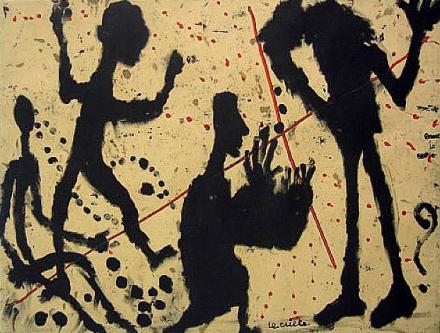
Le culte
Louis Soutter
1942

Chelsea Rooftops in the Snow
1980-1989
Andreas Feininger
d. February 18, 1999
_______________________
Three Prose Poems
Sharmistha Mohanty
granta
(....)
When a great loneliness has been attained, when there is no assurance, when the self is threadbare, ragged at the edges, when a life is so shaken out and empty that there is room in it for every object and being it watches, it is then that the ragged self sees through the muscular light, through the complex, melodic call of the unknown bird which never shows itself, and does not stop seeing, it finds a transparency in things that leads to their sources, whether that be a season or a man, the black clay horse with a benign sadness in its eyes leading to the hands of its maker, so nothing seems to have a definite end, and it moves towards each thing as easily as night towards day, so that the distinction between what is human and what is not falls away, and this is a knowing that cannot be lost as strength can or the ability to love, from this an enormous power unleashes itself that looks from the outside like complete powerlessness, and the evening wind from over the sea makes that threadbare self billow like a tattered sail, all that resisted it now become the air on which it rises, so that what has come to stay can regard the clear spring night, regard the new stars, regard the different trees, as variations on a life span, each not to itself but to the other standing witness.
...(more)
via The Page
_______________________
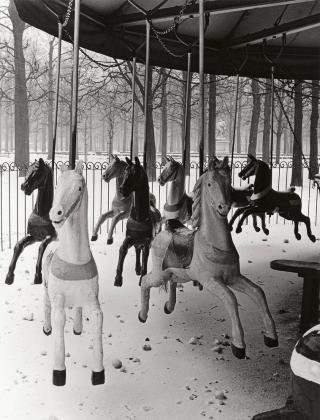
Izis
Israëlis Bidermanas
1911 - 1980
_______________________
It is the way it is
Tua Forsström
Translated by David McDuff
books from Finland
(....)
*
There is a certain kind of loss
and September’s objectivity
releases something imperceptible,
and is displaced: it makes
no difference. It is a coolness
that has settled on the surfaces,
it kept me quiet. One sits
on a bench that looks like other benches,
trains leave on time, dogs bark,
one is. Close to you
I read books and confused my name
with names of other places: a summer kitchen
with radio news in front of blowing curtains,
my cousin sailing in the bay
I stood on the threshold of my mother’s bedroom,
she was not there
Bedrooms smell differently in summer:
a weather of gentle snowfalls
One sees a snake and treads carefully
on the grass for a few days. Constantly weakened
by revenge: I inform against myself. There was
a magic room that was called Childhood
and always the same unfamiliar personal description
I have kept quiet for a long time. And now
the wind takes hold of the sail
and drives my cousin straight across the bay
the small red sail red against the green
*
...(more)
_______________________
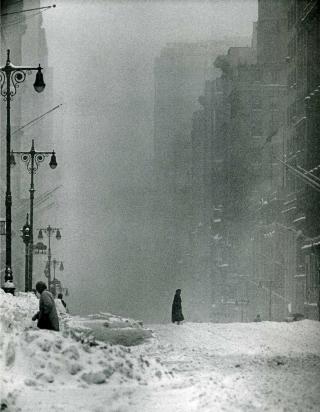
Big Snow, 42nd Street
Andreas Feininger
1956
_______________________
A Cheerful Note on Literary Translation
Elizabeth Oakes
(....)
Now, after five years of intensive study and a stack of Finnish novels half navigated, I begin to suspect that tens years is an optimistic estimate. But I won’t give up. How could I, faced with the plethora of freaky, awesome novels published in Finnish every year? When I read a Finnish novel, how can I not engage in the submarine process that is reconciling the expressive quirks of my mother tongue with an aesthetic code shaped by a wildly different grammar? How can I resist something so mind expandingly fun?
Every literary translator I’ve spoken with emphasizes joy, if not expressly then by simply overflowing with it whenever the topic of translation comes up. So what’s with the tendency to write about literary translation within the rhetoric of the hopeless battle?
...(more)
Better Than Sliced Breada webzine created by English students at the University of Helsinki.
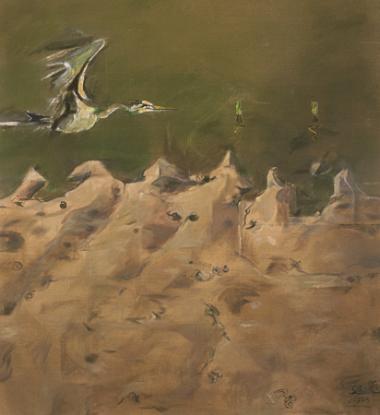
Bird Over Sand
Graham Sutherland
1975
_______________________
The Daily Growler
Mike Greene
d. February 11, 2015
A Personal Note
a moving tribute and rememberance by Languagehat
From his last post -
Existing in New York City---I'm Retreating While the Fascists Proceed
thegrowlingwolf
(....)Butterflies and Pig Pens
In a hovering splash
Of vibrating color
Guided by instincts
It's an insect's
High-flown search
For perhaps a meal
Over the grunting
Hunger of hairy
Slopping monsters
But sadly
This controversial flutter
Reveals no
Seductive pollen, only
A strong whiff of degradation
And like a true monarch
It turns its naturally
Divine nose
Up at the reality below.
I'm wafting off to my fantasyland on the wings of a soured-stomached butterfly.
Of course, I know, like Huey Newton said before he was murdered, everything is politics even food.
_______________________

Road at Porthclais
Graham Sutherland
1975
_______________________
Never trust a corporation to do a library’s job
As Google abandons its past, Internet archivists step in to save our collective memory
Andy Baio
Google’s slow fade with librarians
Jessamyn West resonds
(....)
We were having our own doubts, of course. How could you not? The Google Books project seemed to be letting itself go. Things any librarian would notice: bad scans; faulty metadata; narrowing the scope of public domain; having machines do jobs that should be done (or at least overseen) by humans. They seemed to be restricting and worsening access to cultural content, not expanding and improving it. Maybe we were going in different directions?
(....)
Don’t get me wrong, we’re doing pretty great on our own, better than ever really. We’ve gotten a bit more independent, not putting all of our eggs into any one basket, gotten better at establishing boundaries. Still not sure, after all that, how we got this all so wrong. Didn’t we both want the same thing? Maybe it really wasn’t us, it was them. Most days it’s hard to remember what we saw in Google. Why did we think we’d make good partners?
...(more)
The MessageA Pandaemonium Revolver Collection by @anildash @craigmod @fimoculous @ftrain @jessamyn @jomc @page88 @pomeranian99 @quinnnorton @tcarmody @tressiemcphd @waxpancake @zephoria @zeynep
Internet Archive
_______________________
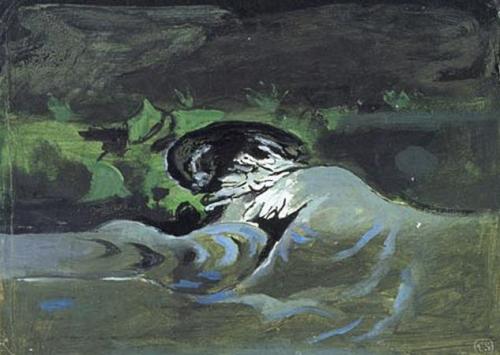
The Wave
Graham Sutherland
d. February 17, 1980
_______________________
The Funnel And Stamate
Urmuz
parallel translation and introduction byFlorina Kostulias
exquisite corpse
(....)
III
One day, after sunset, Stamate was immersed in studies of astronomy and philosophy he was conducting through the communication tube on the subject of the Kosmos and Auto-Kosmos, when it seemed to him, for a fleeting moment, that he perceived precisely the essence hidden in the drupe of the “thing in itself”, when, suddenly, he got distracted by a female voice, a siren’s song which went straight to the heart, and which he could hear fading into the distance disappearing like an echo.........
Running to the opening in the canal with the view of Nirvana, Stamate was detained by the irresistible charm of the melodious sound, when a technical commission of the hydraulic services, accompanied by workers showed-up, and had all the time to knock down one of the walls and to build there a lake with green banks. Toward the evening, on the lake appeared, pulled by a graceful blue swan, a trireme in the shape of a shell, which brought with it, dressed in flowers, a superb rusty funnel.........
Stamate, without losing his cool, hurled some dust on the funnel; and, after unsaddling and feeding the animal, out of diplomacy, he threw himself face down on the floor, and there he remained in a state of insensibility for eight working days, the necessary time interval, he thought, civil procedure required to pass in order to take possession of the objects. Upon the end of this term, coming out of lethargy and returning to his daily occupations, as well as the upright position, Stamate felt entirely re-born. Never before had he felt the divine frissons of love. He felt a better, kinder man, and the stir he experienced at the sight of the funnel made him happy and, at the same time, he felt wretched and wanted to cry like a child............
He dusted the funnel with a rug, and after greasing its main holes with tincture of iodine, took her, and with strong ties fixed her at the opening into the attic; it was then, when for the first time, Stamate went through her like lighting a bolt and stole a kiss............
From this moment, Stamate, gradually forgetting his sacred duties as father and husband, began to sneak out every night by cutting the ties that kept him attached to the family stake in order to give himself free rein in the pursuit of his boundless love, and so, he began to go more and more frequently through the interior of the funnel, jumping into her from a diving board especially built and then descending, with vertiginous speed, on his hands, on a mobile wooden ladder establishing the communication at the mouth of the attic...
...(more)
Urmuz
1883 - 1923
_______________________
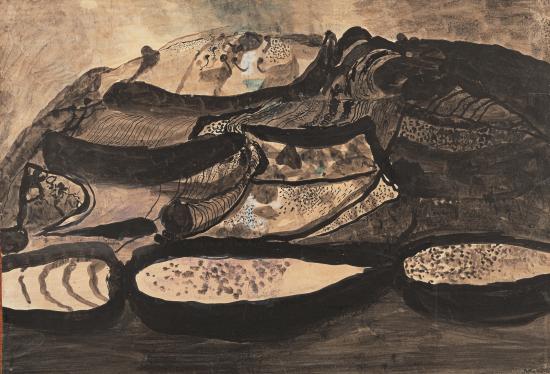
Dark Hill - Landscape with Hedges and Fields
Graham Sutherland
1940
_______________________
Leaving the Twentieth Century
McKenzie Wark
berfois
What might a Marx for the twenty-first century, a #Marx21c, look like? Perhaps as different to that of the nineteenth century as this era is from that one. These are some personal, impressionistic reflections on what that might look like.
The Marxism that I know is part of my life through four kinds of experience: the party, the popular front, the avant-gardes and the university. Each offered its own possibilities and limits for Marxist thought and practice.
My apprenticeship was the period from the late ‘70s through to the ‘90s. It was a time of modifiers. The existing language for describing the situation accreted a layer of suffixes and adjectives, but the language itself didn’t change. The situation was postmodern, or postfordist, or it was late capitalism, and a bit later it would become neoliberal.
None of these are adequate descriptions. The situation could only be named structurally, with the modified term denoting only that it was somehow different to the other term, to the recent past. It wasn’t modern, Fordist capitalism any more. Not the least problem for #Marx21c is to create a new language.
...(more)
_______________________
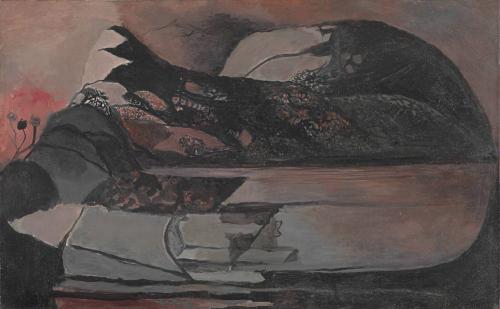
Graham Sutherland
_______________________
Kino
Haruki Murakami
Translated, from the Japanese, by Philip Gabriel
(....)
Fall came and the cat disappeared.
It took a few days for Kino to realize that it was gone. This cat—still nameless—came to the bar when it wanted to and sometimes didn’t show up for a while, so if Kino didn’t see it for a week, or even ten days, he wasn’t particularly worried. He was fond of the cat, and the cat seemed to trust him. It was also like a good-luck charm for the bar. Kino had the distinct impression that as long as it was asleep in a corner nothing bad would happen. But when two weeks had passed he began to be concerned. After three weeks, Kino’s gut told him that the cat wouldn’t be coming back.
Around the time that the cat disappeared, Kino started to notice snakes outside, near the building.
...(more)

Winter Still Life
1956
William Scott
b. February 15, 1913
_______________________
A warning from a time prior to hyper-connectivity…
from Henri Lefebvre's Critique of Everyday Life
Deterritorial Investigations Unit
At the extreme, signs and significations which are nothing more than significations lose all meaning. At the extreme looms that shadow of what we will call ‘the great pleonasm': the unmediated passing immediately into the unmediated and the everyday recorded just as it is in the everyday – the events grasped, pulverized, and transmitted as rapidly as light and consciousness – the repetition of the identical in a wild whirling dance devoid of Dionysian rapture, since the ‘news’ never contains anything really new. If this extreme were reached, the closed circuit of communication and information would jeopardize the unmediated and mediated alike. It would merge them in a monotonous and Babel-like confusion. The reign of the global would also be the reign of a gigantic tautology, which would kill all dramas after having exploited them shamelessly.
Of course, this extreme is still a long way away. It would be a closed circuit, a circuit from hell, a perfect circle in which the absence of communication and communication pushed to the point of paroxysm would meet and their identities emerge. But it will never come full circle. There will always been something new and unforeseen, if only in terms of sheer horror. ...(more)
Critique of Everyday LifeHenri Lefebvre google books
_______________________
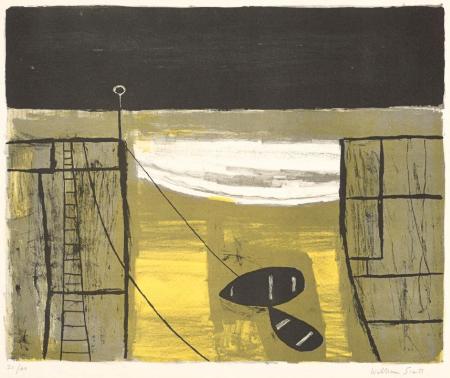
The Harbour
William Scott
1952
_______________________
The stones in your garden
Vénus Khoury-Ghata
Translated from the French by Marilyn Hacker
prairie schooner
The stones in your garden speak louder than the people passing by
they claim an ancestry that goes back to the first cave
when two flintstones controlled fire
and a pauper wind swept the brambles of an alphabet gone deaf
...(more)
_______________________
A List, not a Map
Paul Jaussen
jacket22
Whenever I move to a new place, I find that getting lost is essential. I’ve never been very good at top-down, abstract forms of orientation. I have to feel my way around. I drive, walk, take a bus. Certain locations become reference points, often unusual ones. I remember a street because of a particular laundromat or the bright purple paint job on a house.
That subject-position of being disoriented, uncertain, and unacclimated will be my approach to this series of commentaries, wherein I explore Detroit poetry as a complete outsider, a new-comer, a non-expert.
(....)
If I had to use a metaphor, I think I would borrow and extend Young’s goal, which was to use the Jacket2 commentary series to push herself beyond her “neck of the woods.” As a newcomer, I have no natural habitat. I’m simply trying to learn the basic contours of the landscape. To that end, I’m calling this account “field notes,” an incomplete record, a draft of a draft. Over the next months, I will offer an accidental list of poetry in the broadest of senses, wherever I find it, wherever it leads me. I’ll leave the mapping and counter-mapping for others, more qualified than myself, hoping that the observations published here might contribute to that project to come.
...(more)
_______________________
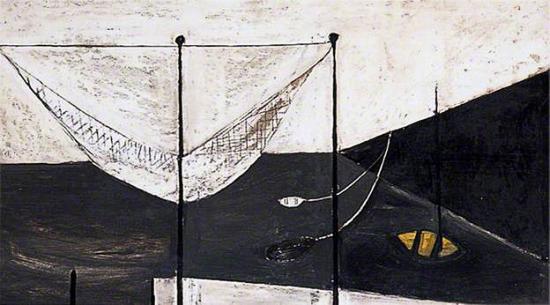
Harbour
William Scott
1950–1951
_______________________
Philosophy is a Bunch of Empty Ideas: Interview with Peter Unger
author of Empty Ideas: A Critique of Analytic Philosophy
(....)
In a way, all I’m doing is detailing things that were already said aphoristically by Wittgenstein in Philosophical Investigations. I read it twice over in the sixties, pretty soon after it came out, when I was an undergraduate. I believed it all — well, sort of. I knew, but I didn’t want to know, and so it just went on. And basically what Philosophical Investigations says is that when you’re doing philosophy, you’re not going to find out anything. You find out some trivial things, you’ll be under the delusion that you’re doing a great deal, but what you should do is stop and do something more productive.
But you didn’t stop.
Neither did Wittgenstein. He kept scribbling away! What stopped him from doing that was terminal cancer. Only cancer had that desired effect. But it also had some other undesired effects — namely, ending his life. (Laughter)
Even though Wittgeinstein is perhaps the most widely admired philosopher of the twentieth century, at least amongst mainstream philosophy, nobody really pays attention to his main conclusion: you can’t really do anything when you do this stuff, you should stop it. He basically said you should try to be a therapist for young people who are starting out in philosophy, to get them away from the field and turn them into something more useful. No more of of this fruitless, self-deluding endeavor. So really, what I’m doing is detailing some of that.
...(more)
_______________________
.A philosophy for militants
Alain Badiou interviewed by Aaron Hess
(....)
What is a political orientation today? With the failure of the old communism, with the development of neoliberalism, with the rise of an authoritarian-capitalist China, it remains an open question. The new wars today, the imperialist occupations of Iraq and Afghanistan, too, are complex—there is no clear case of the “good” against the “evil.” In this situation, to find some clear points of orientation, some common principles for action, is a necessity. That is why many people interested in philosophy today are looking for a general orientation toward political life, and that the question of a general orientation is obscure is not surprising.
It is not so much the question of immediate struggles which is obscure. In many cases it is not. For instance, that you should struggle against racist police violence is clear. But of course in the long-term it is not enough to defend a purely negative indignation. You must have some principles, some positive will, an affirmative determination. So, finally, in this present obscurity, the search for light by way of philosophy is normal. Of course it may be difficult for philosophy to give a clear answer to these demands, but that is its problem.
...(more)
via Forgottenness
_______________________
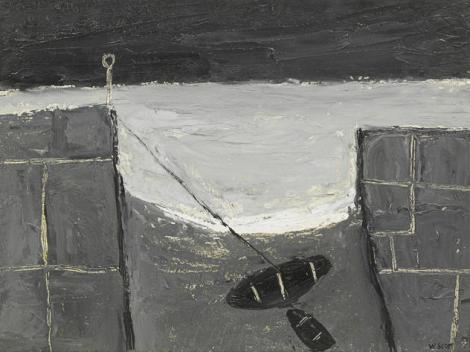
Cornish Harbour
William Scott
1950 or 1951
|
